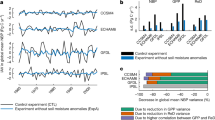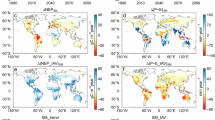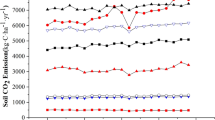Abstract
Soils store about 1.5x10^16 g of carbon (C), about as much as terrestrial vegetation and atmosphere combined 1. The complex interplay between factors that regulate C release from soil through respiration is not completely understood, but could potentially exert strong influence on global radiation balance and climate change2. Respiration exerts strong effect on the spatial heterogeneity of terrestrial C cycle 3 and its temporal variation remains more poorly understood compared to gross ecosystem production (GEP) 4. This variation can analytically be attributed to changes in environmental factors, but forecasting individual deviations remains a challenge 4. Here we propose that deviations of the typical covariance pattern of primary environmental drivers (temperature, T, and moisture, presented in this study as volumetric water content, VWC) may affect the deviations of respiratory C loss. Typically, T and VWC are inversely related, with warm periods being generally drier and vice versa, and therefore the stimulating effect of one factor is counterbalanced by unfavorable levels of the other 5. However, should the driving variables be positively related, respiratory carbon release can increase significantly (Supplementary Fig. 1a). This hypothesis is supported by two consecutive years of ecosystem-level and soil carbon exchange data that differed in rain fall periodicity and T-VWC-covariance. With changing climate patterns, including the intensity and frequency of rainfall events, there is the possibility that the covariance patterns of T and VWC may change, and more frequent periods of positive T-VWC covariance may lead to greater loss of soil carbon, and contribute to greater radiative forcing on Earth’s energy budget.
Similar content being viewed by others
Article PDF
Author information
Authors and Affiliations
Corresponding author
Rights and permissions
About this article
Cite this article
Noormets, A., Gavazzi, M., Strickland, S. et al. Changes in temperature-moisture covariance could increase soil carbon loss. Nat Prec (2007). https://doi.org/10.1038/npre.2007.290.1
Received:
Accepted:
Published:
DOI: https://doi.org/10.1038/npre.2007.290.1



